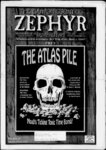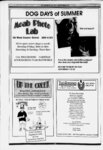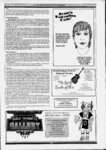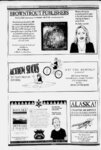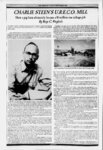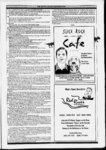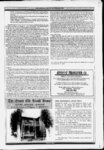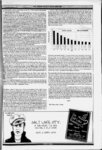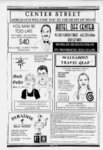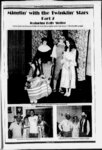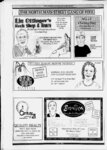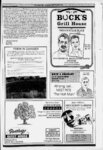| OCR Text |
Show f . AROUND USS THE BEND A GAIN--. SAN JUAN COUNTY By Ken Sleight THE MAKING OF A NUCLEAR WASTE DUMP AT WHITE MESA Thousands of tons of radioactive waste, from construction of the first atomic bomb during the Manhattan Project, are scheduled to be moved from the Tonawanda, New York dumpsite to White Mesa. On April 27, 1998, the U.S. Army Corps of Engineers announced a $38 million cleanup of the New York waste. The material is far from being regular uranium ore. It is so hazardous that an environmental group (FACT) in New York filed a federal lawsuit raising questions about the clean-u- p project's safety. The group asked the judge to halt the cleanup pending more research as the plan would not remove all traces of radioactivity from the site. The cleanup is now in progress and could take two construction seasons. The shipments could begin in July. The waste matter will be put into laige containers and loaded onto flatbed railroad cars and shipped west to the railroad sidings of Cisco or Green River, Utah. As it stands now, the waste would then be hauled by truck from the railroad to the White Mesa mill south of Blanding near the community of White Mesa. It would pass through the communities of Moab, Monticello, and Blanding. Sixty truck loads of waste would be hauled through these communities each week. At the mill site, the waste material would be emptied from the containers and with conventional ores, and stockpiled. It would be processed alone or processed in the same manner as that used to process conventional ores. One has to closely examine the permitting procedure to further grasp the Let's follow its trail. problem. On May 8, 1998, the International Uranium Corporation (IUC) requested that its "NRC Source Material License SUA-135be amended to allow the receipt and processing of alternate feed material (i.e., material other than natural uranium ore) at its White Mesa uranium mill. Whereupon, the Nuclear Regulatory Commission (NRC) then suddenly approved the Tonawanda radioactive wastes as an "alternate uranium mill feed lle.(2) byproduct material," and approved the IUC application to run this radioactive material through the White Mesa mill as "ore" in order to be able to categorize the output as mill tailings. The discussion of these alternate feed materials is not new. The State of Utah has been very interested in any proposed changes to current NRC policy and notes the danger of circumventing the public process regarding such license amendment requests. The State reports that such requests have been handled on a basis by the NRC with opportunity for input by interested parties. This process allows evaluation in accordance with existing policy concerning these materials. Utah believes that the acceptance and processing of these materials should be the exception for a uranium mill as they are designed to process and recover uranium from ores. It is feared that the White Mesa mill will perform "sham recycling" so it can 8" case-by-ca- se dispose of the nation's radioactive waste, even though the recoverable uranium content of the waste material would not support the cost of recycling the waste as ore. The primary goal is to receive the recycling fee, "a disposal fee in disguise" from the government The April 1998 Record of Decision for the waste sites, issued by the US. Army Corps of Engineers, has identified that the selected remedy for this waste is that the material is to be "excavated and shipped offsite for disposal at an appropriately licensed or permitted facility." The problem here is that the chosen site, the White Mesa mill, is not an appropriately licensed or permitted facility for this new material. But the NRC, in its approval did not follow its own internal guidance on making its determination. The guidance addresses ten items that must be evaluated before determining whether such material can be disposed in a tailings impoundment These items include such issues as "the radiological nature of the material, existing regulation of the material, hazardous nature of the material, potential environmental impacts, radioactive waste compacts, the concurrence by the approval from affected low-lev- el State or DOE to take title to the tailings after closure..." It failed to follow its own requirements including notifying the affected compacts to determine if they approve of the shipments to Utah, contacting the State of Utah and the Department of Energy (DOE) to determine if they agree to take title to the waste after closure, and determining whether NRC or the State of Utah would exempt the waste material from disposal regulations. The waste is not currently regulated under the Atomic Energy Act. The guidance states that these types of radioactive materials "shall not be authorized for disposal in an lie. (2) byproduct material impoundment" In a letter of June 10, 1998, Dianne R. Nielson, Executive Director of the Utah State Department of Environmental Quality, wrote that a "policy decision which shifts "reprocessing" to "waste disposal in disguise" will trigger several issues - including the need for state siting approval, need for a Part 61 license for waste disposal of non-lle.(payment of appropriate waste disposal fees to the state, and acceleration of the need for a state groundwater discharge permit." Envirocare in northern Utah has been receiving alternate feed materials. The company is fully licensed to receive the product and receives extensive oversight review. This same licensing and oversight review has not yet been accomplished for the White Mesa mill. There comes now an enhanced interest by other companies and facilities to receive and process waste materials from the Department of Energy. So in the face of this demand, as uranium mills expand their operations to receive primarily alternate feed instead of ores, it is urgent that a separate standard for such "reprocessing" facilities be adopted. The NRCs position in approving the license amendment is a step closer to giving uranium operators the go ahead to find that any Hlle.(2) byproduct material," regardless of uranium content, can be approved for processing and disposal in the tailings impoundment. It appears a "waste disposal in disguise" and it becomes a radioactive waste dump instead. It becomes simply a matter of moving waste from one point to another with the government picking up the bill. The NRC, through this license amendment, has opened a troubling door. The White Mesa mill could now become a de facto disposal facility without addressing the important issues that are of great concern to the State and the public. And there needs to be new rules or laws that recognize the difference between processing of traditional ores and reprocessing of waste materials that resemble ores. Furthermore, the health effects and other environmental concerns have not yet been fully addressed. No public comments were solicited by the NRC before it made its decision. No public hearings or meetings were held. The public remains in the dark. 2), On July 6, 1 met with the San Juan Commission and asked whether or not it had been in contact with NRC, the State or the International Uranium Corporation regarding this important matter. The answer was in the negative. Time will tell of their involvement, but it's hard to believe that they had no communication at all with these entities. I requested the Commission to ask NRC or the State to conduct public hearings or meetings regarding the waste haul and subsequent deposit. Commissioners Ty Lewis and Bill Redd quickly vetoed the request. They felt that the public in San Juan County didn't need to be informed or be allowed to make comments regarding the matter in such a forum. The issue would only produce emotion. And the public wouldn't understand it even if the information was provided. Commissioner Mark Maryboy was the lone commissioner that stated that he would welcome a public meeting. DON'T OUR DESERT SUN COOK YOUR BRAIN. LET PROTECT YOURSELF FROM UV DEGRADATION. WEAR A HAT! WE HAVE A ' j ...i.'.w . W-l-D- -E SELECTION ya-IkO- J&'Ks" 'If- ' ' |
